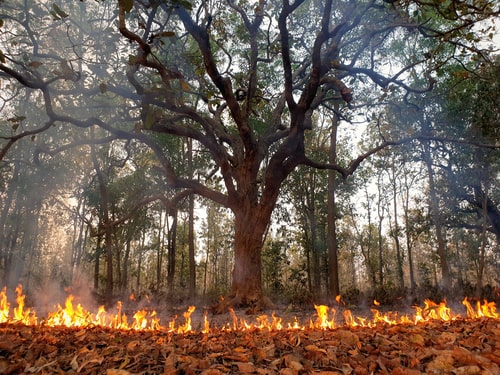
Losses from the Australian bushfire season have risen to $300 million and are expected to rise even further.
The bushfires have hit large parts of the eastern and southern coast of Australia, which includes Sydney and Adelaide.
Since September 5th, insurers have handled more than 6000 insurance claims from the bushfire regions of New South Wales, Queensland, South Australia and Victoria. Insurance losses are estimated to be at $431 million according to a statement by Insurance Council of Australia.
The damage caused by this fire has been extraordinary. More than four million hectares have burned in New South Wales alone according to the BBC, which dwarfs any previous forest fires. In contrast, 900,000 hectares were burnt in the 2019 Amazon fires and 800,000 hectares in the 2018 Californian wildfires.
Despite the large-scale damage inflicted by the fires, experts still predict that the cost for reinsurers will not be as large as previous Australian natural catastrophe events.
The all-time high was Cyclone Debbie which hit Queensland and New South Wales in 2017 inflicting $1.6 billion worth of damage.
Australia’s worst than ever bushfire season has been exacerbated by changing weather driven by a phenomenon known as “Indian Ocean Dipole” or “Indian Nino”. This is the difference in the sea-surface temperatures in opposite parts - east and west, of the Indian Ocean.
Temperatures between the West and East parts of the Ocean shift between warm and cold via cycles of “positive, neutral and negative”. In 2019, the Dipole experienced a positive phase (strongest for six decades) meaning that there were warmer sea temperatures in the western Indian Ocean and colder temperatures in the eastern Indian Ocean. Therefore, this means that there is greater rain in the West and less rain in the East.
Consequently, the Horn of Africa experienced 300% above average increase in rainfall between October and mid-November according to the Famine Early Warning Systems Network. Djibouti, Ethiopia, Kenya, Uganda, Tanzania, Somalia and South Sudan have all been affected by the severe water conditions too.
Meanwhile, in Australia, spring temperatures broke all records and sparked a series of bushfires across eastern and southern parts of the country.
It’s not just the property insurance losses that will be of concern to insurers and corporates. The bushfires will cost the tourism industry hundreds of millions of dollars, operators say. Images of fire and smoke making front pages around the world risked further damaging the industry by scaring away international visitors, so Business Interruption is a key concern.
The fires have devastated some of Australia’s key tourism areas, including East Gippsland in Victoria and the New South Wales south coast. Fire and Rescue NSW also ordered people to evacuate the Kosciuszko national park, including the Thredbo resort, which operator Event Hospitality & Entertainment said would be “closed until further notice”.
The scale of the disaster is also likely to have a drastic effect on insurance premiums. The operator of the Reef casino in Cairns said disaster insurance had already become more expensive.
Reef Casino Trust told the stock exchange its insurer reduced its coverage against cyclones, floods and tidal waves and increased its annual premium by $487,000, to $1.3m.
Challenging market conditions in the insurance industry have led to reductions in the insurance coverage available on commercially reasonable terms for certain risks and an increase in premium costs.

Related Articles
Property
Property
Property